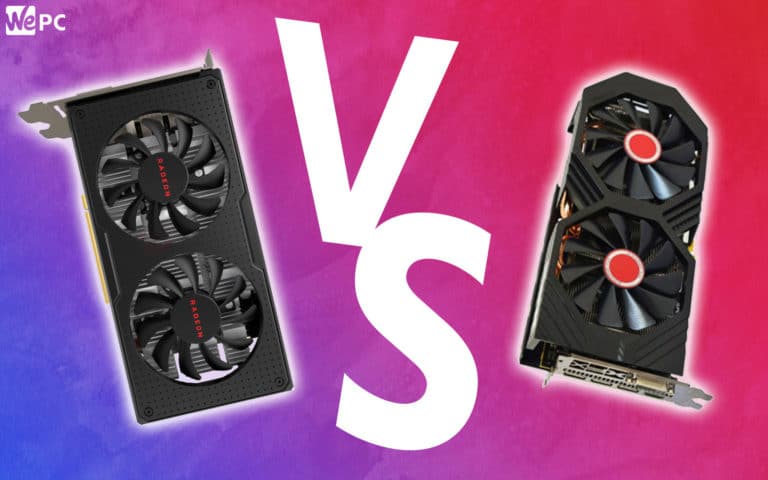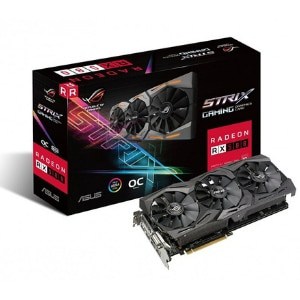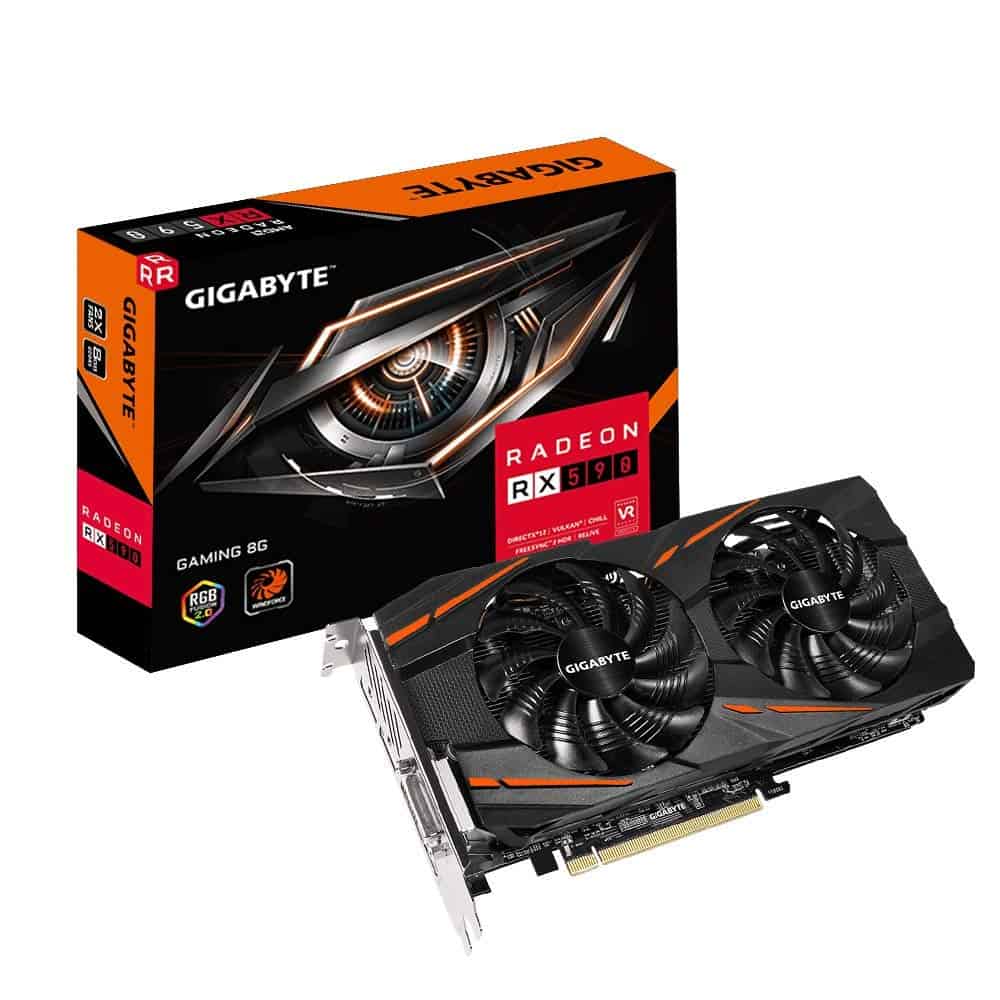RX 580 Vs RX 590
This article compares the RX 580 and the RX 590 to find out which of these GPU’s is the better performing graphics card

AMD/Nvidia
The high-end market for graphics cards undeniably sways in Nvidia’s favor, especially as their recently released RTX-series features the latest ray tracing technology. These industry-leading GPUs offer enhanced shadow imagery and improved gaming performance, but their increased costs price them out of the average gamer’s budget.
When it comes to mid-range GPUs, AMD puts up more of a fight. The RX 580 was released as an improved version of the RX 480, and the RX 590 came along a year later to offer another step up in quality, which is one of the less confusing chronologies in GPU releases to follow.
That’s not to say they would necessarily beat out Nvidia’s equivalent, the closest of which would be the GTX 1060, but when compared against each other the RX 580 and the RX 590 offer decent performance for gamers at pretty reasonable prices in today’s market.
Despite getting off to an underwhelming start, these affordable graphics cards offer comparatively powerful performance and can handle the demands of most modern titles. The RX 590 made a fashionably late entrance a year after the RX 580, but how much did it benefit from having that extra time in which the manufacturing process went from 14nm to 12nm? Let’s find out!
Architecture
AMD released the RX 590 with a new and improved 12nm process which is what causes the graphics card’s faster clock speeds, and increased instructions per clock. It’s one of the key areas in which the RX 590 supersedes the RX 580, but it’s actually an easy update to make, hence the disappointment many felt when they realized the notable changes stopped here.
That said, there’s a reasonable difference between the clock speeds of these two GPUs, with the RX 580 having a base clock speed of 1,120 MHz and the RX 590 having a slightly improved clock speed of 1,469 MHz.This is actually higher than the RX 580 which has a boosted clock speed of 1,380 MHz, with the RX 590 shooting ahead with 1,560 MHz.
They share the same number of shading units complete with 36 compute units (CUs), 144 texture units, and 32 render outputs (ROPs). There’s also the cores, which remain at 2,304 for both the RX 580 and the RX 590.
Cooling
The RX 590 sat at around 79 degrees in temperature when we tested it against a relatively demanding load for approximately an hour. Another degree or two and it would be starting to creep into overheating territory, but this temperature isn’t totally unreasonable for the mid-range GPU.
It has a higher TDP of 225 watts which means it consumes more power than the RX 580, although the RX 590 has a lower 30-degrees idle temperature compared to the RX 580 and its max temperature of 33 degrees, suggesting that it has the better cooling system of the two.
Even the RX 580’s TDP of 185 watts is higher than the previous RX 400-series which is a deliberate attempt to compensate for the higher clock speeds that this newer generation of graphics cards is capable of delivering.
Dimensions
Want to make sure your new graphics card fits in with the rest of your board? It’s worth double-checking the dimensions before making your decision, especially if your current PC setup is looking a little crowded already.
It won’t necessarily help with your decision, as the RX 580 and the RX 590 share the same 241mm in length and a dual-slot cooling solution that spans their widths. They also connect via the standard PCI-Express 3.0 x 16 interface.
Both GPUs have an HDMI output and three DisplayPort outputs, so you can connect multiple devices and transfer high definition video to your monitor. They share a die size of 232mm-squared and a 5.7 billion transistor count, so there’s not much difference between them here either.
Resolution/FPS
For a graphics card in this price range, you can expect to see the best results playing at 1080p, with around 60 frames per second as their best benchmark. Either option would be great for delivering console-quality graphics, but there is a slight advantage to the RX 590.
There was a bigger gap in the performance when playing Shadow of the Tomb Raider at 1080p, although the RX 590’s lead became less noticeable in Assassin’s Creed Odyssey and Deus Ex: Mankind Divided, and any edge it had ceased to exist playing Warhammer 2.
Comparably, games like Forza Horizon showed particularly promising frame rate speeds from the RX 590 when played at 1080p, consistently managing above 80 FPS. When pushed to 1440p, the RX 590 alone manages to retain around 60 FPS, but it’s clear that the RX 590 and the RX 580 both perform their best at 1080p.
Ray Tracing
Ray tracing has been one of the more exciting developments in recent GPU history, so it’s no wonder that gamers are desperate to know which cards do or don’t support this technology, despite it not being widely available in modern games just yet.
Nvidia took the lead in this area, but AMD has since promised that their RX Radeon 6000 graphics cards will be complete with ray tracing and RTX-superior performance, unlike the RX 500-series which wasn’t designed for this.
You could probably squeeze some ray tracing out of the RX 590, but it would cause a significant drop in quality and frame rates, especially at higher settings, and the RX 580 would struggle even more under such a load. If ray tracing is important to you, it’s worth checking out one of the more expensive GPUs.
VRAM
The RX 590 has a higher maximum memory bandwidth than the RX 580, reaching 256 GB/s compared to 224 GB/s, therefore it’ll be able to read stored data at faster speeds. This is where the differences between these GPUs end, as both graphics cards have very similar specs in terms of memory from here on out.
The amount of data that can be stored on each GPU is the same, with 8GB of VRAM memory capacity, so there’s no discernable difference between the card’s data processing ability. Similarly, both cards feature a 256-bit memory bus width.
Somewhat disappointingly, when AMD created these improved versions of the RX 480 and RX 490, they didn’t upgrade from GDDR5 to GDDR6 which would have delivered higher transfer rates and increased performance, but this would have meant an increase in prices to follow.
Conclusion
For what you pay, the RX 590 is currently one of the best value for money graphics cards available today. It delivers detailed frames at decent speeds during most of the latest games at 1080p, although the RX 580 doesn’t trail too far behind if you’re looking to spend a little less.
With that being said, both of these upgraded GPUs are essentially slightly altered versions of the RX 400-series. Yes, you get faster clock speeds, but that’s practically as far as the new features go. It lacks the latest GDDR6 memory and it doesn’t offer any additional stream processors, so whether or not it’s worth upgrading to depends on your existing GPU.
While they do hold some ground in the midrange market, if you wanted to take it one step further in terms of quality you’d be looking at Nvidia’s GTX 1660 Super, which produces the same if not better performance yet keeps temperatures low and fan noise to a minimum.




